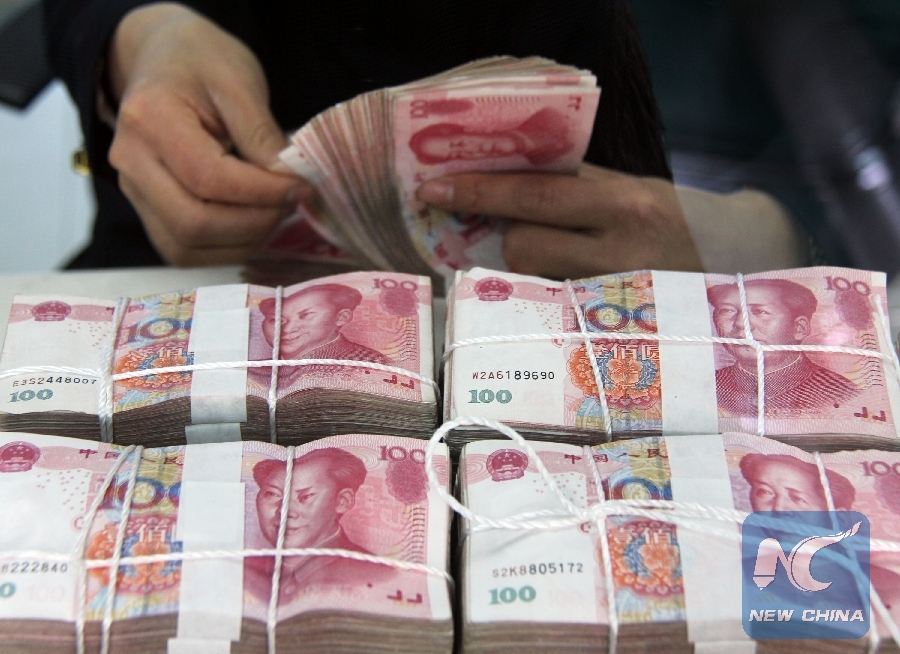
File Photo: A worker counts Chinese currency renminbi banknotes at a bank in Tancheng County of Linyi City, east China's Shandong Province, April 11, 2013. (Xinhua/Zhang Chunlei)
NEW YORK, May 5 (Xinhua) -- Internationalization of the Chinese currency has significantly boosted the global trading volume of currencies of emerging Asian markets (EM Asia) , a senior emerging market forex trader has said.
"With further expansion of offshore renminbi (RMB) trade, the market share of EM Asia forex trading has grown significantly, which becomes a huge revenue source for major banks across the world," Kai Lin, executive director of Emerging Market Asia Forex Trading at Standard Chartered Bank, told Xinhua on Thursday.
"The introduction of offshore renminbi trading by the People's Bank of China (PBoC) was a genius step for RMB internationalization," he said on the sidelines of a market update seminar jointly held here by the China General Chamber of Commerce-USA and Standard Chartered Bank.
When the PBoC and the Hong Kong Monetary Authority piloted offshore renminbi trading in 2010, the daily trading volume was around 100 million U.S. dollars, yet it quickly went up to around 50 billion dollars today and contributes to a huge part of EM Asia forex trading globally, according to Lin.
"I think the rise of China obviously has huge impact on all aspects, but I just focus on the forex trading part," he told participants at the seminar.
But he opposes full convertibility of RMB, given the lessons from Asian financial crisis in 1997.
As a veteran in forex trading market, Lin believes that the RMB has been outperforming other emerging market currencies and a majority of Group of Ten (G10) currencies over the past few months as the Chinese economy is not only under control but also shows resilience.
"RMB has been trading mostly within the range between 6.70 to 6.75 dollars so far, even though there were breakthroughs on either side, it always came back to that range," said Lin.
Standard Chartered forecasted at the end of last year that the RMB would end 2019 at 6.65 dollars, helped by foreign inflows.
Lin warned there might be a crisis generating from Europe, rather than emerging markets, given that the Trump administration has threatened to impose a 20-percent tariff on imported cars from the European Union (EU), the lack of leadership in Europe, and the EU's end to its quantitative easing policy earlier this year, rendering the continent with few measures to deal with any crisis.
"I think we have good chance to see the (RMB) basket trading back up, especially against the euro," Lin said, adding that "we don't just look at dollar against the CNH (offshore RMB), we look at the whole basket of currencies against the CNH."

